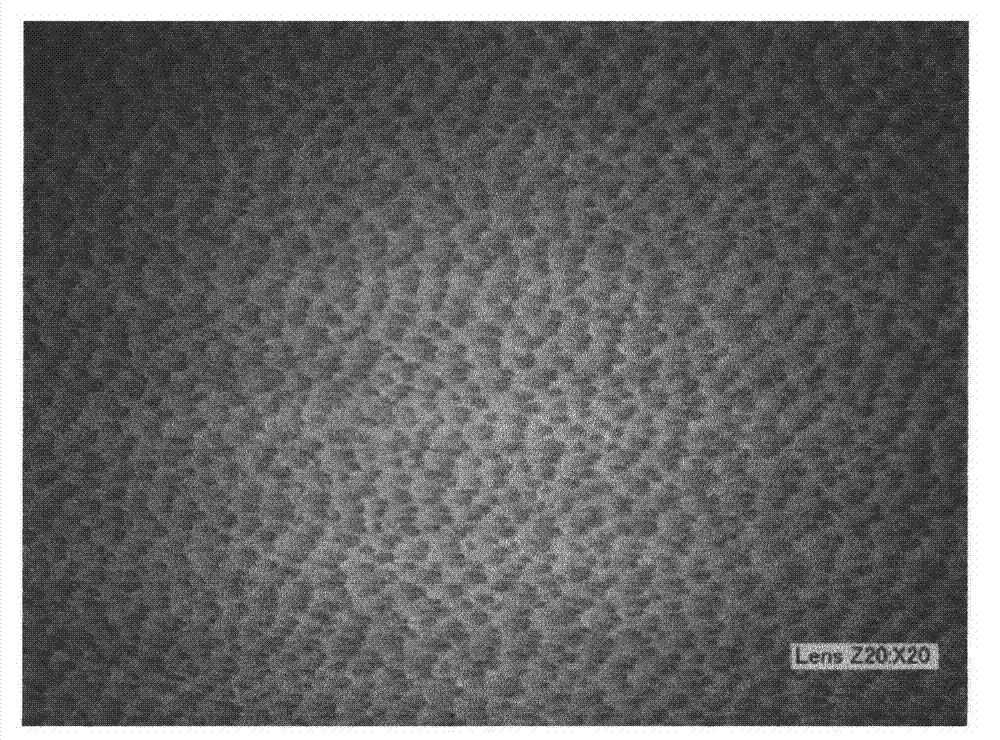High-speed leather identification method
An identification method and leather technology, applied in the direction of analyzing materials, material analysis by optical means, measuring devices, etc., can solve the problems of high cost and low identification efficiency, and achieve the effects of simple operation, fast identification speed, and improved efficiency.
- Summary
- Abstract
- Description
- Claims
- Application Information
AI Technical Summary
Problems solved by technology
Method used
Image
Examples
Embodiment 1
[0032] A method for quickly identifying leather materials, comprising the following steps:
[0033] (1) Place the leather sample flat under standard atmospheric conditions and let it stand for 24 hours;
[0034] (2) On the sample preparation table, use a holder to display the leather sample after standing still, with the front facing up, use tweezers to hold the absorbent cotton dipped in absolute ethanol and wipe it gently on the surface of the leather sample 8 times. After the water and ethanol volatilized, the leather surface sample was obtained; on the sample preparation table, the two ends of the leather sample after the surface identification were clamped with a holder, so that it was naturally straightened without tension, and then quickly cut with a sample cutting machine. The sample is cut off, and then the sample is placed flat under standard atmospheric conditions for 2 hours, and after the deformation of the incision of the sample is restored, a leather cross-secti...
Embodiment 2
[0039] A rapid identification method for leather materials, the steps are the same as in Example 1, wherein the standing time in step 1 is 72 hours, and when the surface sample is prepared in step 2, use tweezers to hold the absorbent cotton dipped in absolute ethanol on the surface of the leather sample Wipe gently 2 times.
[0040] According to the obtained leather sample surface and cross-sectional microscopic images (see image 3 and Figure 4 ) It can be seen that its surface features are: few pores, thick, nearly round, single existence, relatively uniform and irregular distribution, and rough grain surface. The size of the pores is basically the same, and the number is small, only 1 / 10 to 1 / 5 of that of yellow cow leather. The pores are single and arranged irregularly. The mastoids are tall and dense, and the grooves are deep; the cross-sectional characteristics are: the collagen fiber bundles from the upper layer to the lower layer are relatively uniform from fine t...
Embodiment 3
[0042] A rapid identification method for leather materials, the steps are the same as in Example 1, wherein the standing time in step 1 is 36 hours, and when the surface sample is prepared in step 2, use tweezers to hold the absorbent cotton dipped in absolute ethanol on the surface of the leather sample Wipe gently 6 times.
[0043] According to the obtained leather sample surface and cross-sectional microscopic images (see Figure 5 and Figure 6), it can be seen that its surface features are: the pores on the leather surface are approximately circular, the size is basically the same, concentrated in clusters, distributed irregularly in vertical and horizontal directions or concentrated in clusters, and distributed in random rows, and the leather surface is divided into numerous sizes. Regular convex, papilla-like, pores open in depressions; cross-sectional features: the distribution of grain layer and reticular layer can be clearly seen on the cross-section, the fibers in ...
PUM
 Login to View More
Login to View More Abstract
Description
Claims
Application Information
 Login to View More
Login to View More - R&D
- Intellectual Property
- Life Sciences
- Materials
- Tech Scout
- Unparalleled Data Quality
- Higher Quality Content
- 60% Fewer Hallucinations
Browse by: Latest US Patents, China's latest patents, Technical Efficacy Thesaurus, Application Domain, Technology Topic, Popular Technical Reports.
© 2025 PatSnap. All rights reserved.Legal|Privacy policy|Modern Slavery Act Transparency Statement|Sitemap|About US| Contact US: help@patsnap.com



